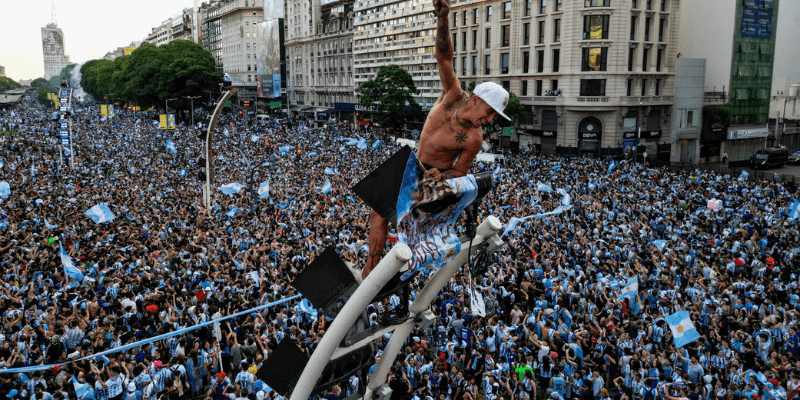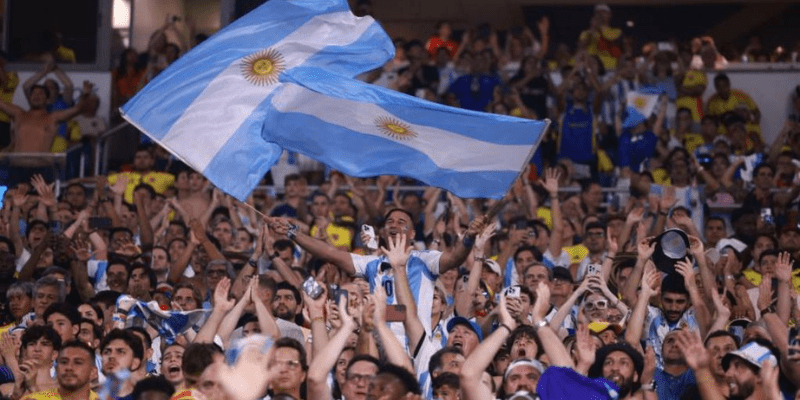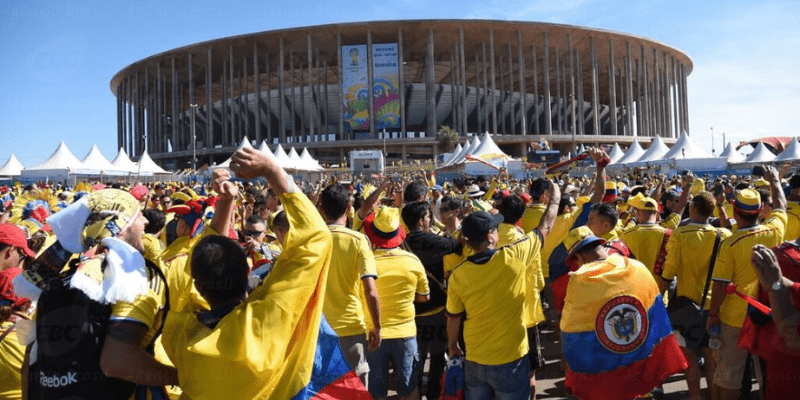The songs and chants of Copa America fans are more than just noise—they’re the beating heart of South American football. At KorKick, we want to take you on a journey through the melodies, the passion, and the stories behind the voices that unite nations in the most emotional of tournaments.
In this article, we’ll explore the official tournament anthems, the tribal fan chants by country, viral new songs that emerged in the latest editions, controversies linked to chants, and how music and chant culture are evolving in Copa América. Let’s march into the terraces together.
Official Copa América songs through history

Every major tournament carries an official anthem meant to capture the spirit of the moment. Songs and chants of Copa America fans include both these institutional themes and grassroots chants, but first, we should look at the officially adopted songs over the years.
- Since the early 2000s (starting from ~2004), each Copa América typically features a designated theme song, chosen by CONMEBOL, artists or broadcast partners.
- For example: Vibra Continente served as the official song in the 2019 edition, blending Latin pop and Brazilian rhythms.
- La Gozadera by Gente de Zona (with Copa América–themed adaptation) is well remembered after being used around the 2021 tournament.
- In the 2024 edition, while Shakira’s “Puntería” was promoted heavily as part of broadcast campaigns, it wasn’t always confirmed as an official CONMEBOL anthem in all jurisdictions.
These official songs play during opening ceremonies, television promos, and sometimes in stadiums—but they only tell part of the story. The real soul lies in what fans sing inside the terraces.
How nations chant: fan culture country by country

When you walk into a stadium for a Copa América group match, you’ll hear something different depending on which national fans are present. Below, KorKick gives you a sampling of national chant styles and iconic fan songs.
Argentina
One of the most iconic chants: “Vamos, vamos, Argentina” — an anthem that transcends generations. It originated, it’s a fixture whenever the Albiceleste plays.
In 2024, a new fan-made chant also gained traction, weaving references to Messi, Maradona, and even political undertones about Argentina’s identity. The national team players themselves were seen singing it during celebrations.
Brazil
Brazilian supporters bring a carnival energy. Their chants often celebrate titles and legacy—e.g. “Pentacampeão” (five-time champion) is common among jokes or boastful refrains. Many Brazilian chants also refer to past glories, legendary players, or chants that originated in club football and migrate to the national stage.
Colombia
In recent Copa América editions (notably 2024), Colombia’s fans have rallied around songs like “El Ritmo Que Nos Une” by Ryan Castro and “Falcao” by Alexys Hernández. These tracks combine pop and urban rhythms, and are embraced by younger fans to bring a fresh pulse to the national support.
Older chants remain, but the newer ones often dominate the stadium playlists and social media shares.
Uruguay
Though Uruguay is smaller in population, their fans are fierce. “Cielo de un solo color”, a rock-murga song by Uruguayan band No Te Va Gustar, is beloved and has been adopted as an unofficial anthem in tournaments including Copa América. While not originally written for football, its emotional resonance and association with national pride give it staying power in games.
Others: Chile, Peru, Paraguay, etc.
Across South America, many chants derive, local folk rhythms (cumbia, cueca, reggaeton), or popular melodies. For instance, during Chile’s Copa América 2015, the tournament theme “Al Sur del Mundo” was integrated into media use, while fans still led their own chants, all fans share the same goal: to create a wall of sound, to shake opponents, and to lift their national team’s spirit.
Viral chants and controversies in Copa América 2024
No tournament is immune to viral moments—and chants have frequently made global headlines during recent Copa Américas. In 2024, a few particular incidents stood out.
New Argentine chant surprises everyone
Among the loudest waves in 2024 was a fan chant that combined references to Diego Maradona, Lionel Messi, and Argentine identity. It was widely adopted by supporters and even sung by players after matches, solidifying the connection between the stands and the squad.
Controversial chants and backlash
After Argentina’s 2024 triumph, videos circulated showing some players singing a chant referencing French players’ origins. The lyrics—perceived by many as discriminatory—triggered investigations, arguing that euphoria is not an excuse for racism.
The incident showed that songs and chants of Copa America fans can have consequences far beyond the pitch, impacting reputation, diplomatic relations, and disciplinary action.
These controversies have sparked debates about freedom of expression, fan culture, and responsibility in football. While chants are emotional and spontaneous, their impact is real—and sometimes risky.
Why chants matter: rhythm, identity, and unity

You may ask: why do songs and chants matter so much in a tournament like Copa América? Here are the dee.
1. Emotional connection and identity
Chants distill centuries of football tradition into phrases. They connect modern fans with past heroes, regional pride, local rivalries—all in a few lines shouted in unison.
2. Momentum and pressure
When fans chant relentlessly, they can amplify the intensity on the pitch. A goal celebration, a wave of chant, can demoralize the opponent and lift your team’s morale. The stadium becomes a “12th man.”
3. Viral amplification
Modern chants go viral. A chant recorded on a phone can spread across social media, improving a country’s global footballing image. New chants are often shaped by current stars, politics, or trending music styles.
4. Tension and diplomacy
Chants can provoke. In matches with historical tensions or postcolonial dynamics, chants may carry weight beyond sport. Managing chant culture has become part of broader ethics and governance in football.
Tips if you want to create a lasting chant
What separates a chant that echoes for decades from one that fades after a match? Here are lessons from the terraces:
- Simplicity is key: A handful of catchy lines, repeated often, is more likely to stick.
- Melody matters: Borrowing popular tunes helps supporters pick up chants quickly.
- Emotional hook: Invoke beloved players, national symbols, or shared memories.
- Adaptability: Chants evolve—fans change a few words to reflect new stars or recent events.
- Respect boundaries: Avoid discriminatory content. Passion only works positively if it doesn’t cross ethical lines.
If you combine those elements, your chant might become part of the songs and chants of Copa America fans heritage.
Final Thoughts
Songs and chants of Copa America fans are more than background noise—they’re emotional vessels, tribal identity, and living archives of football culture., every song carries weight: a message to players, to rivals, to the world.
If you loved diving into this sonic side of South American football, stay with KorKick for deep dives, fan interviews, and playlists. And next time you catch a Copa América match—listen closely. You’ll hear history, passion, and politics all wrapped in melody.






